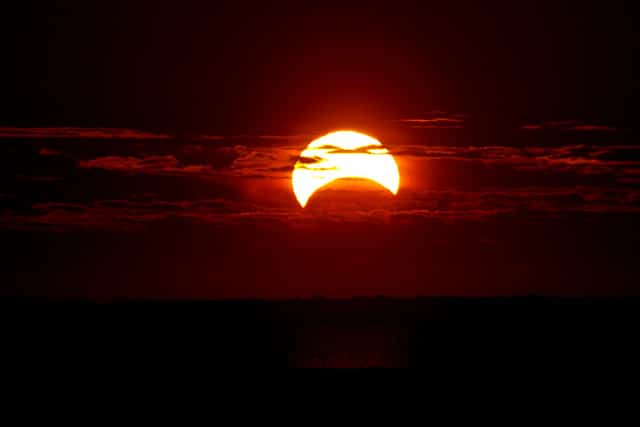
Looking directly at the sun during most parts of an eclipse can permanently damage your vision or blind you. But there are easy ways to view a solar eclipse safely.
On Aug. 21, 2017, the entire United States will see a partial eclipse of the sun. Parts of 11 states will experience a total solar eclipse. If you get a chance to see it, make sure to take care of your vision during the eclipse.
To see a complete eclipse of the sun, you need to be in the right place. The area that will have a complete eclipse – the path of totality – is only 70 miles wide and will move across the continent very quickly. Plan now for where you want to be. You may want a backup plan in case weather gets in the way of your view of the sky.
The only time it is safe to look directly at the sun is when it is completely covered by the moon during the totality phase of an eclipse. You must protect your eyes during the rest of the eclipse or you could damage your retina, possibly causing blindness.
Areas outside the path of totality will have a partial eclipse. Only part of the sun is blocked even at the peak of the eclipse. In those areas, there is no safe time to look at the sun with the naked eye. You must protect your eyes while watching the entire eclipse.
Don’t let the warnings scare you. There are safe ways to watch the eclipse. Make your plans now for how you’ll enjoy the show.
Protect Your Vision During the Eclipse
Before the eclipse, make sure you are prepared and know how to keep your eyes safe. The American Academy of Ophthalmology and the American Astronomical Society have released these tips for safe eclipse viewing.
Watch the Eclipse Indirectly for Simple, Reliable Safety
Another way to see the eclipse is through a pinhole projection or video display.
A pinhole viewer lets you project an image of the sun onto another surface, like paper, a wall or pavement. The image of the sun is safe to look at throughout the eclipse. Learn how to make a pinhole projector or shop for one of these safe-viewing devices.
NASA will have a live stream of the eclipse. Consider watching online or find an event at a local planetarium, science center or club where you know the right safety measures have been taken.




